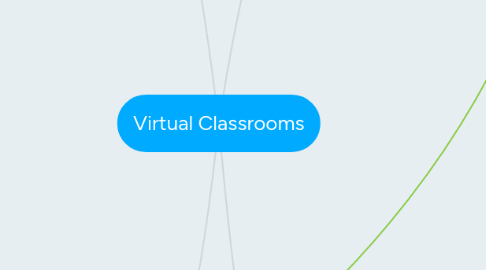
1. Web Awareness
1.1. Internet Safety Resources
1.1.1. mediasmarts.ca
1.1.1.1. Digital Literacy
1.1.1.2. Class Activities/Educational Games
1.1.1.3. Establishing Rules and Boundaries
1.1.2. commonsensemedia.org
1.1.2.1. K-12 Digital Citizenship Curriculum
1.1.2.2. ibook Textbooks
1.1.2.3. Educational Videos
1.1.2.4. Digital Literacy Lessons
1.1.3. cybertalk.ca
1.1.3.1. study reports...
1.1.3.1.1. Adolescents Lack Online Safety Awareness
1.1.3.1.2. Lack of Online Supervision
1.1.3.1.3. Increased Online Use of Bully Peers
1.2. Teacher and Student Tips
1.2.1. DO
1.2.1.1. Re: Email
1.2.1.1.1. Be Professional
1.2.1.1.2. Use Professional Account
1.2.1.1.3. Keep Copies of All Emails
1.2.1.1.4. Never Share Passwords
1.2.1.1.5. Use Teacher Voice
1.2.1.1.6. Use Signature Including Position and School Name
1.2.1.2. Re: Social Networking
1.2.1.2.1. Activate Privacy Settings
1.2.1.2.2. Never Allow Photo Tagging
1.2.1.2.3. Never Post Confidential Info
1.2.1.2.4. Post What You'd Post on Class Wall
1.2.1.2.5. Establish Professional Boundaries
1.2.1.2.6. Set "Office Hours"
1.2.1.2.7. Ensure Student-Teacher Chats Are Recorded
1.2.1.3. Re: Cyber-bullying
1.2.1.3.1. Copy Questionable Data
1.2.1.3.2. Tell User of Inappropriateness
1.2.1.3.3. Advise Administration
1.2.1.3.4. Access Support w/School Board
1.2.1.3.5. Inform School Occupational Health and Wellness
1.2.1.3.6. Contact Teacher Organization
1.2.2. DO NOT
1.2.2.1. Visit Inappropriate Sites
1.2.2.2. Send/Forward Inappropriate Jokes
1.2.2.3. Visit Online Gambling Sites With School Board Equipment
1.2.2.4. Violate Copyright
1.2.2.5. Message During Class
1.2.2.6. Post Inappropriate Photos
1.2.2.7. Bad Mouth Collegues
1.2.2.8. Criticize Administration
1.2.2.9. Share Confidential School Board Info
2. Cyberbullying
2.1. resources
2.1.1. prevnet.ca
2.1.1.1. Assessment Tool
2.1.1.2. Healthy Relationship Tool
2.1.1.3. Cyber Tool
2.1.1.4. Policy and Legislation
2.2. Teacher Tips
2.2.1. Be Clear/Concise
2.2.2. Teach Positive Relationships
2.2.3. Teach Social Responsibility
2.2.3.1. Standing Up For Each Other
2.2.4. Collaboration
2.3. Netiquette
2.3.1. Ethics Rules
2.3.1.1. Do Unto Others...
2.3.2. Core Rules
2.3.2.1. Basic Guidelies
2.3.3. Internet Access
2.3.4. Email Address
2.3.5. Social Media Account
3. Digital Citizenship
3.1. Respect/protect Yourself
3.1.1. Digital Security
3.1.1.1. ensure protection of...
3.1.1.1.1. Data
3.1.1.1.2. Hardware
3.1.1.1.3. Software
3.1.1.1.4. Devices from infiltration
3.1.2. Digital Health and Wellness
3.1.2.1. Ergonomics of Workstation
3.1.2.2. Social Shift
3.1.2.2.1. Physical to Digital
3.1.2.3. Internet Addiction
3.1.3. Digital Rights/Responsibilities
3.1.3.1. consider...
3.1.3.1.1. Varied Levels of Development
3.1.3.1.2. Control and Management
3.1.3.1.3. Digital Citizens Reduce Need for Management
3.2. Respect/protect Others
3.2.1. Digital Access
3.2.1.1. consider..
3.2.1.1.1. Hearing/Visually Impaired Students
3.2.1.1.2. Lack of Home Technologies
3.2.2. Digital Communications
3.2.2.1. Social Networking
3.2.2.2. Web 2.0
3.2.2.3. Texting
3.2.2.4. Identity and Privacy
3.2.3. Digital Etiquette
3.2.3.1. Standards of Conduct
3.2.3.2. Issues of Anonymity
3.2.3.3. Global Audience/Multicultural
3.3. Respect/Protect Intellectual Property
3.3.1. Digital Commerce
3.3.1.1. consider...
3.3.1.1.1. Sharing of Passwords
3.3.1.1.2. Theft
3.3.2. Digital Literacy
3.3.2.1. able to...
3.3.2.1.1. Bookmark Sites
3.3.2.1.2. Find Credible Info
3.3.2.1.3. Change Privacy Settings
3.3.2.1.4. Block Spam
3.3.3. Digital Law
3.3.3.1. based on existing law
3.3.3.1.1. Legal Requirements
3.3.3.1.2. Legal Decisions
3.3.3.1.3. Legal Ethics
4. Authenticity of Web Resources
4.1. it's authentic if we've established...
4.1.1. Criteria
4.1.1.1. Page is Signed
4.1.1.2. Author is Qualified
4.1.1.3. Publisher has Reliable Reputation
4.1.1.4. Contact Info Available
4.1.2. Coverage
4.1.2.1. Info is Relavent
4.1.2.2. Info Is Found in Numerous Sources
4.1.2.3. Info is in Depth
4.1.3. Objectivity
4.1.3.1. Info is Minimally Biased
4.1.3.2. Info is Factual and not Opinion-based
4.1.3.3. Page is Free of Advertisers/Sponsors
4.1.4. Accuracy
4.1.4.1. Info is Error Free
4.1.4.2. Site has an Editor/Fact Checker
4.1.5. Currency
4.1.5.1. Page is Dated
4.1.5.2. Last Update can be Seen
4.1.5.3. Links are current
4.2. Copyright
4.2.1. cite when...
4.2.1.1. Reproducing
4.2.1.2. Using Public Performances
4.2.1.3. Publishing in Print
4.2.1.4. Publicly Displaying/Exhibiting
4.2.1.5. Adapting (Play form Movie etc)
4.2.1.6. Translating
4.2.1.7. Publicly Communicating
4.2.1.8. Broadcasting
